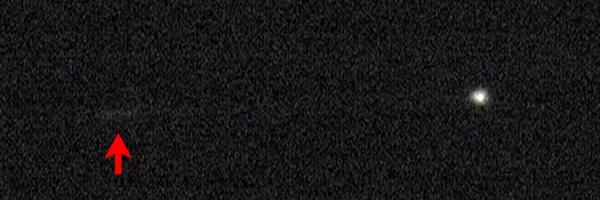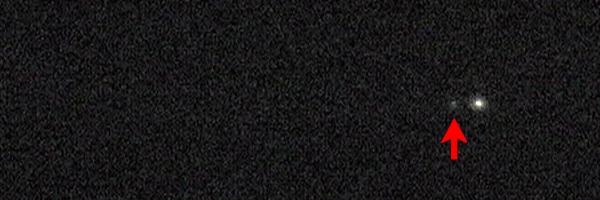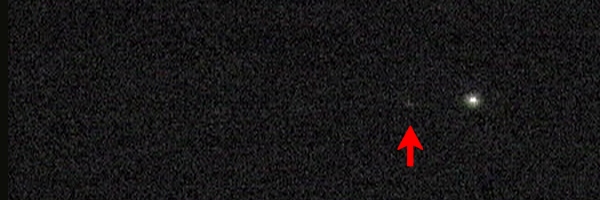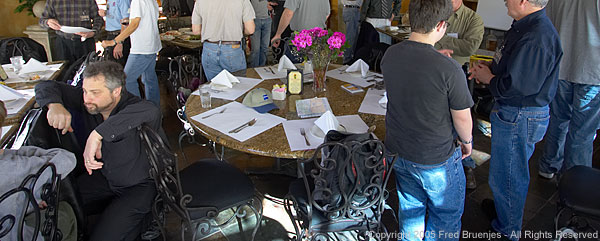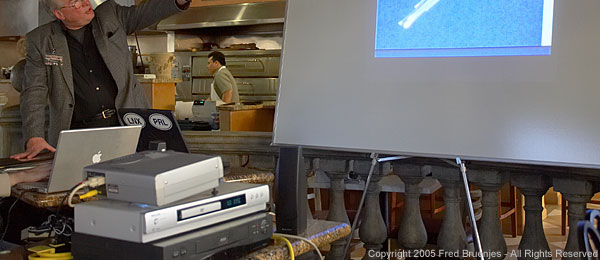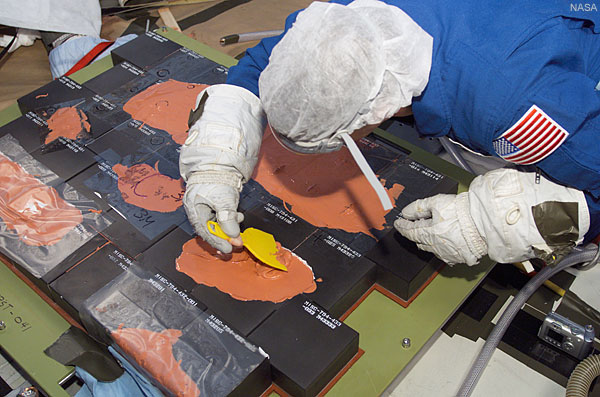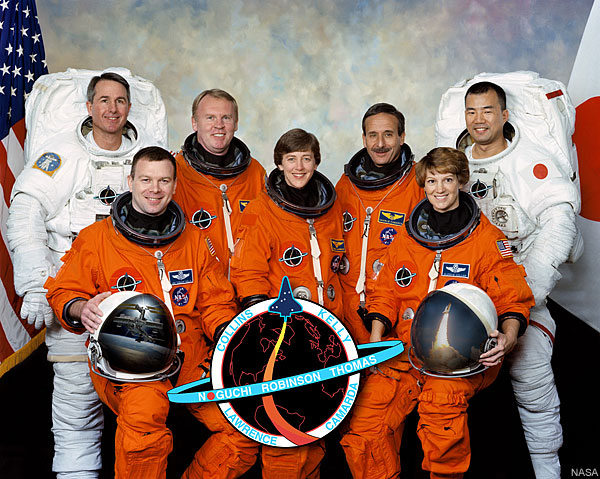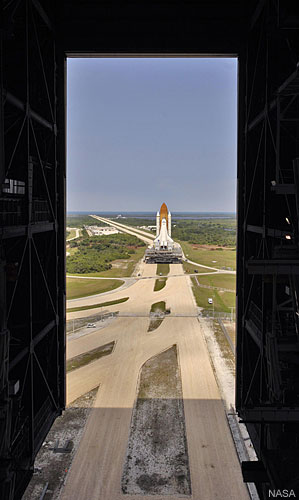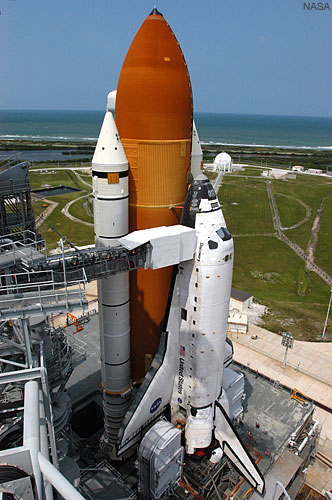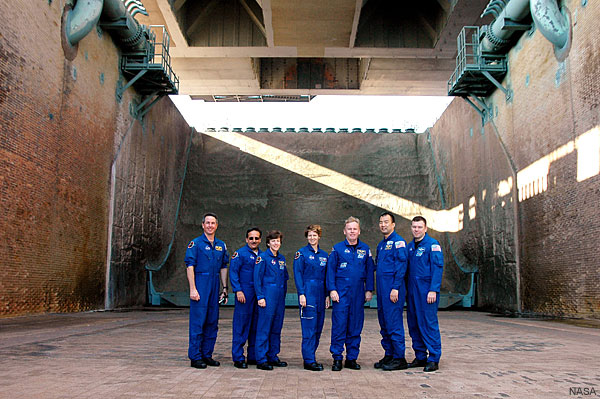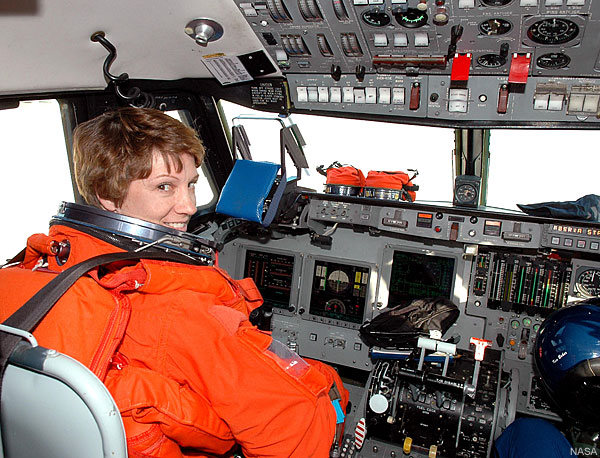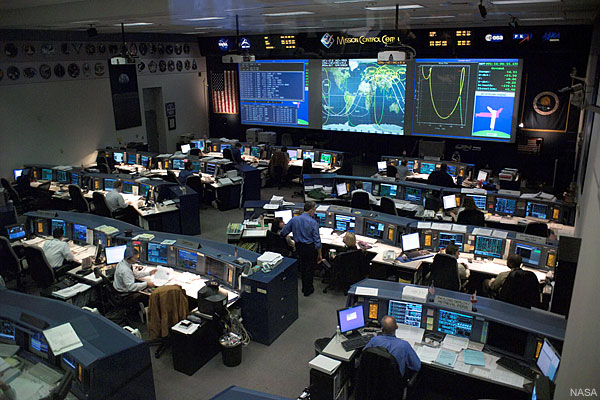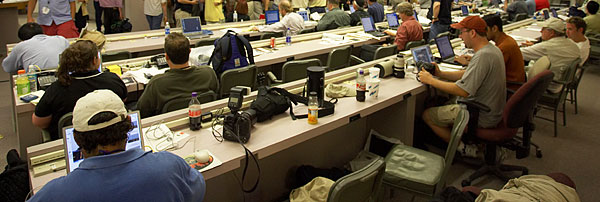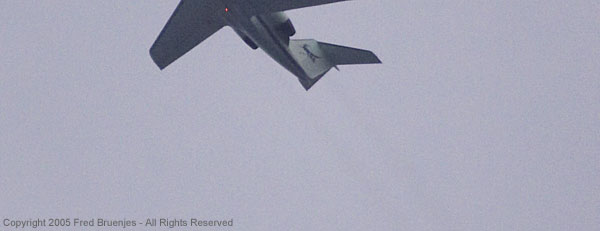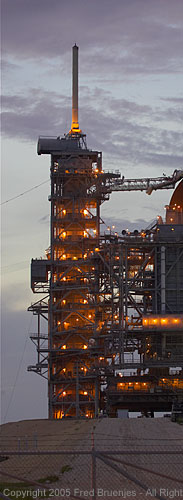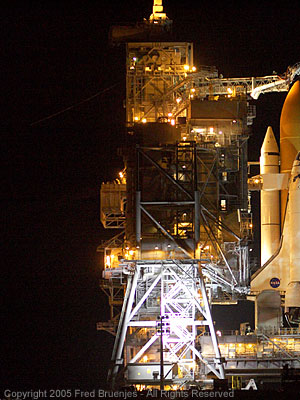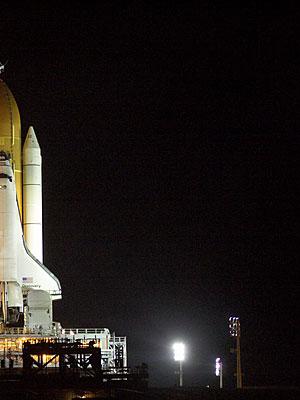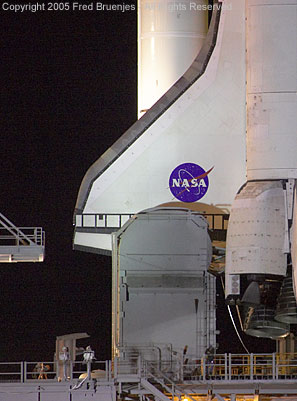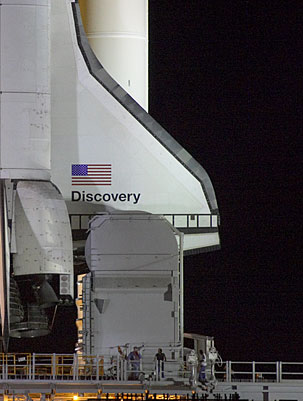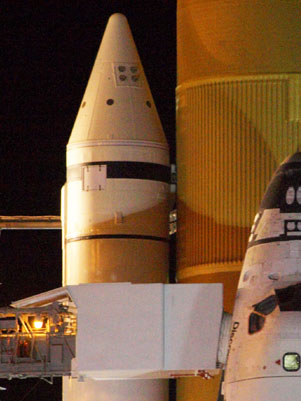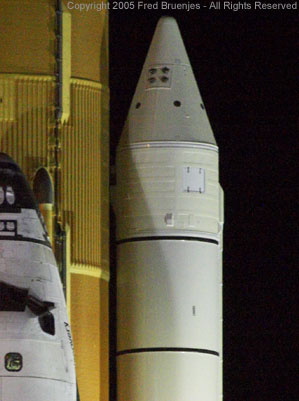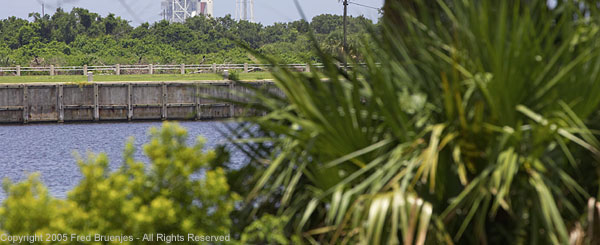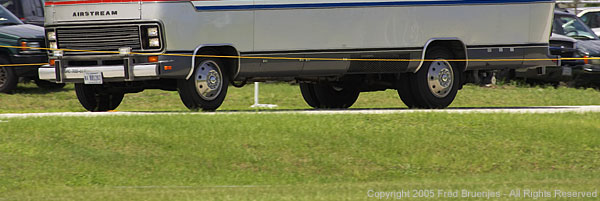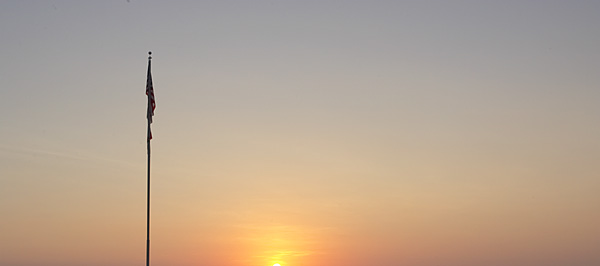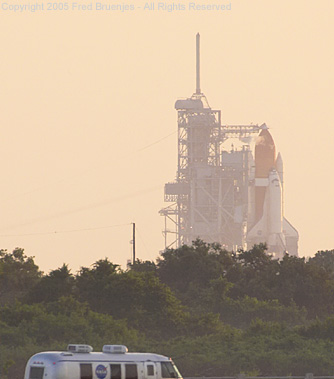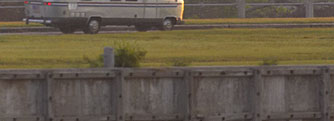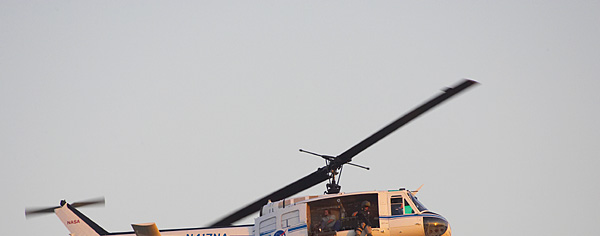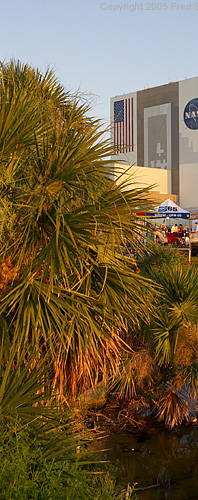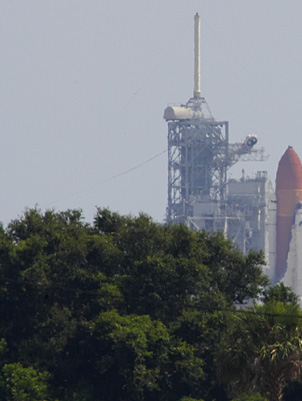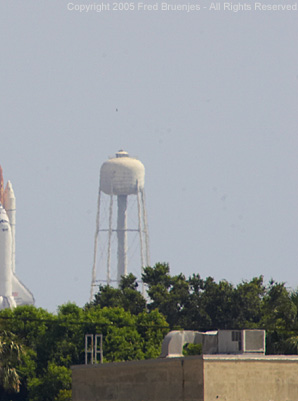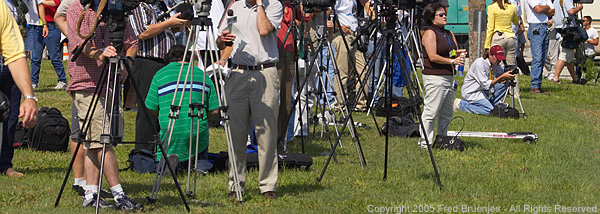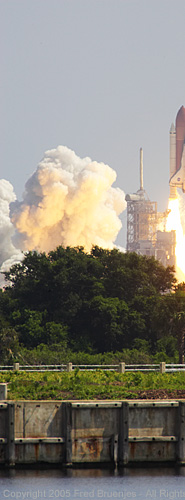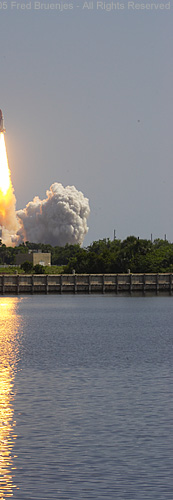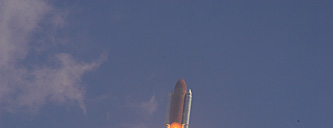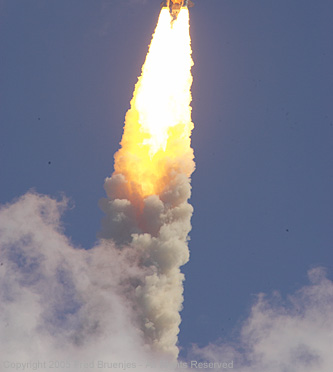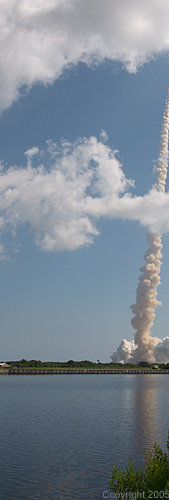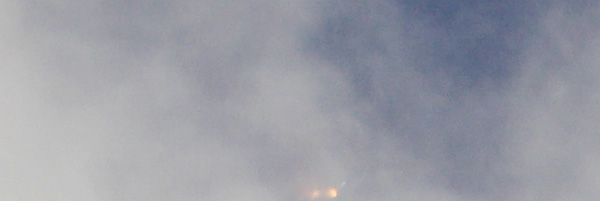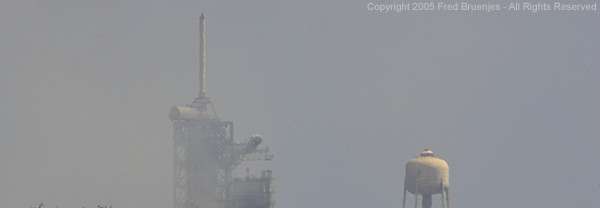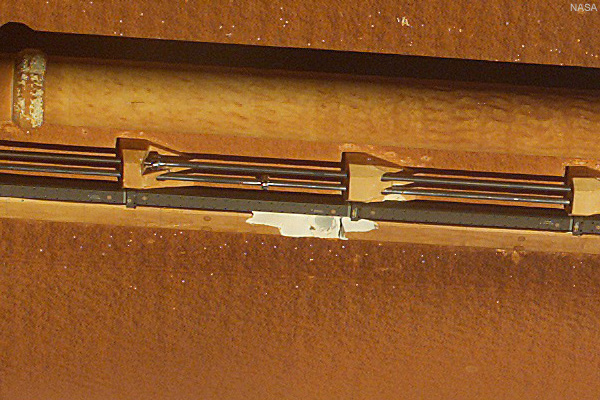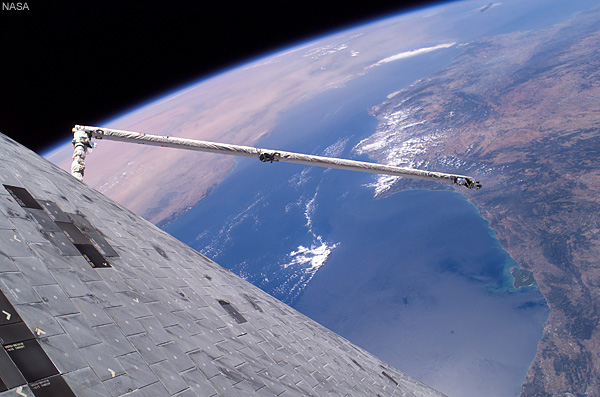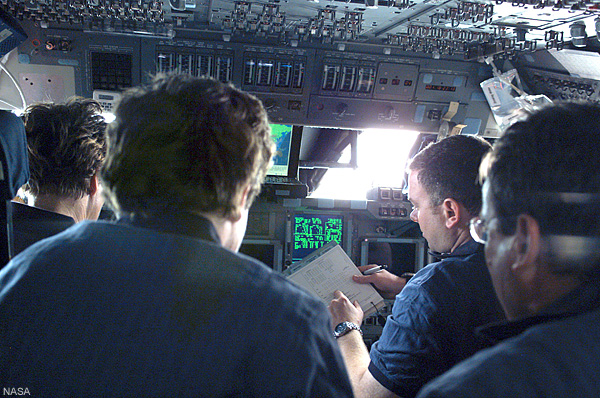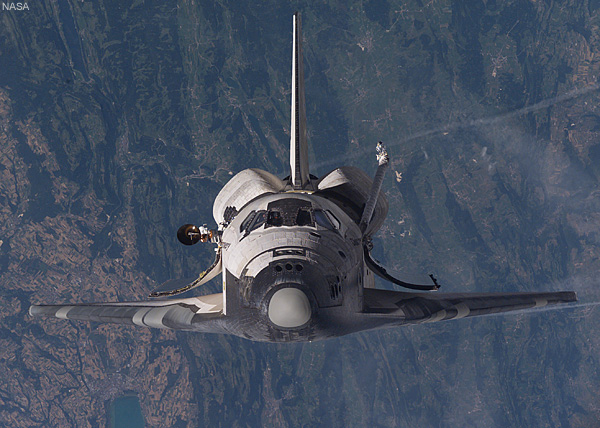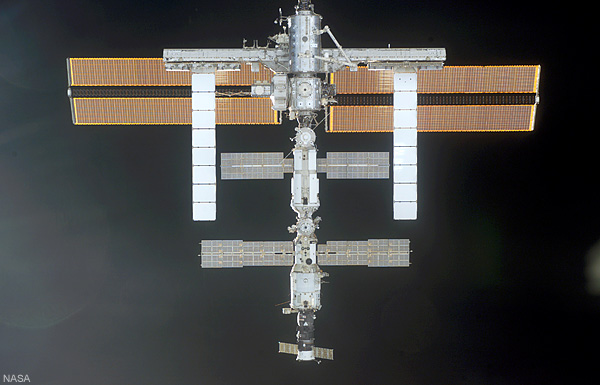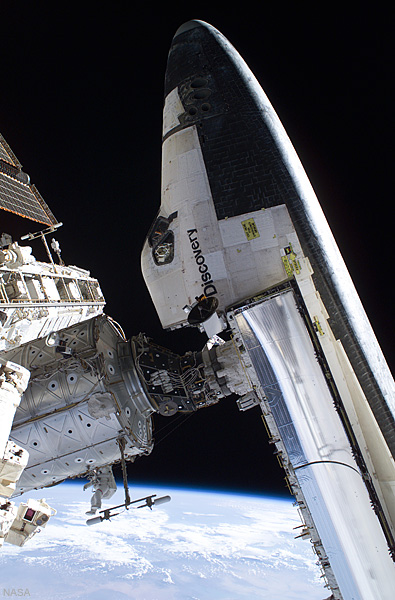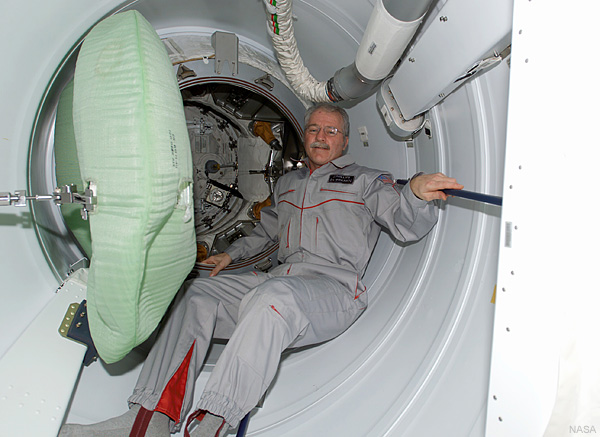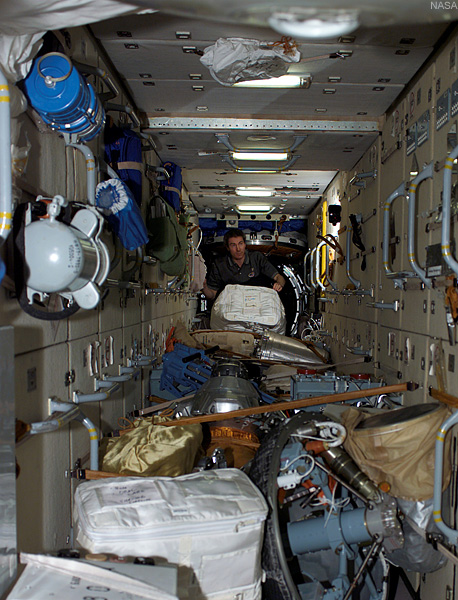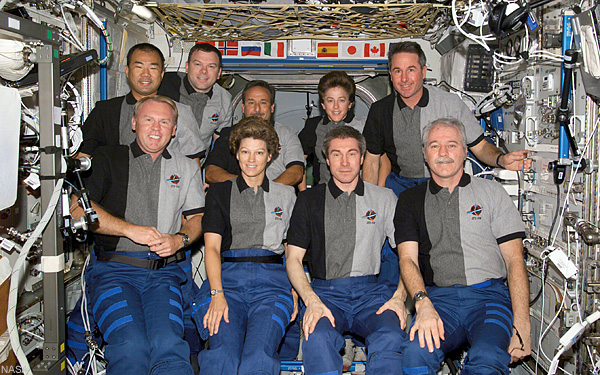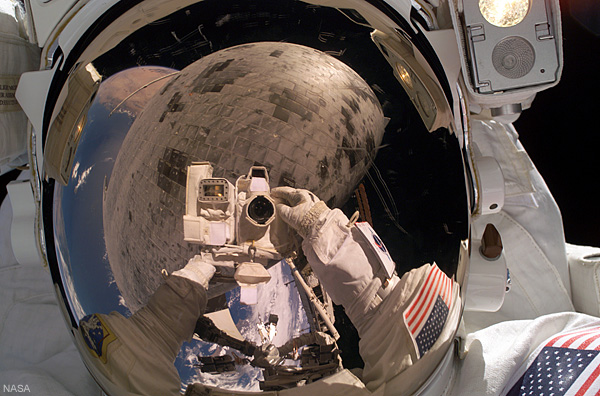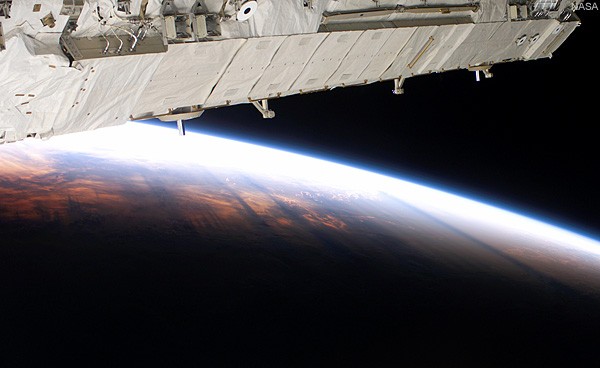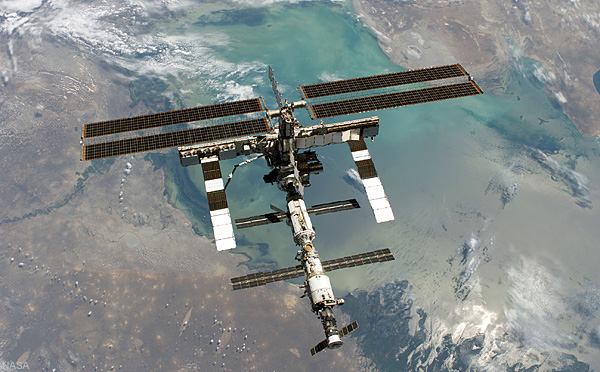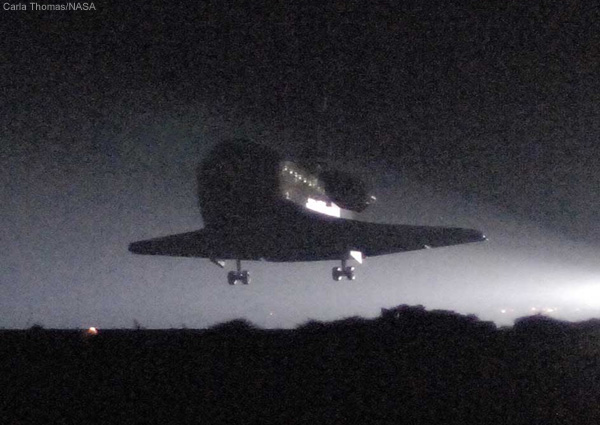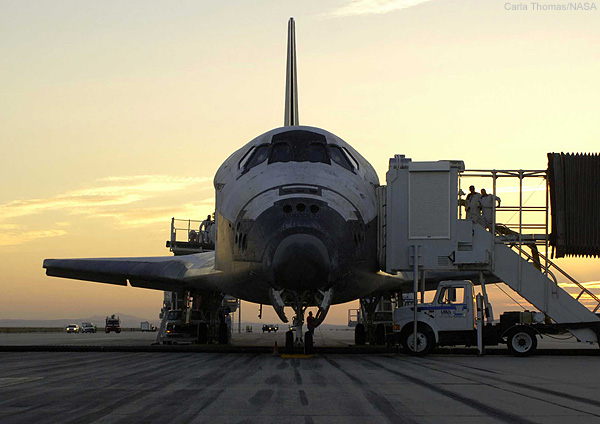The STS-114 Space Shuttle Discovery Mission
Kennedy Space Center, Florida, and Outer Space, July-August, 2005
STS-114 is NASA's first Shuttle mission since the February 1st, 2003 loss of Columbia and her crew on mission STS-107. What follows is an account of the STS-114 mission, from the perspective of a photojournalist, and from the perspective of someone who witnessed the loss of Columbia first hand.
Click HERE to purchase prints of these photos, or click on any  button.
button.
STS-107 Space Shuttle Columbia Disaster
With a long held interest in the space program, I decided to watch the reentry of Columbia after I learned that I would be able to see it from near my home in Ramona, California. Equipped with video and still cameras, I got up before dawn and waited for Columbia to appear. The Shuttle appeared at the appointed time, and I filmed and clicked away to document the reentry. I didn't immediately see anything unusual, and returned home to watch the landing on NASA TV. Arriving home just as the Shuttle was predicted to land, I instantly knew something was wrong when there were no pictures of the Shuttle, just somber Mission Control operators. It was gut wrenching. After revewing my videotape, I noticed debris falling off the Shuttle as it reentered over California and Nevada. NASA used my tape in their investigation.
These three video images show the beginnings of the breakup of Space Shuttle Columbia. The bright object on the right is Columbia. In the top image, a piece of RCC (Reinforced Carbon Carbon) wing broke off, spurting a shower of small fragments that quickly burned up in the atmosphere. In the next images, the RCC piece itself (perhaps only a few inches across) can be seen drifting away from Columbia. In both cases, the extreme speeds of reentry caused even small fragments to burn extremely hot and bright.
A Space Shuttle reentry is a high profile event, and photographers across the United States observed it. Near the second anniversary of the reentry disaster I attended and participated in a meeting of many of the photographers.
STS-114: Return to Flight
Photos courtesy NASA.
The return to flight took more than two years because of the time required to prove the cause of the Columbia accident, and the time to develop methods to eliminate and repair damage. Here an astronaut tests a tile repair technique on simulated damaged tile.
The crew of STS-114: Stephen K. Robinson, James M. Kelly, Andrew S. W. Thomas, Wendy B. Lawrence, Charles J. Camarda, Eileen M. Collins, and Soichi Noguchi.
Shuttle Discovery rolls out of the cavernous Vehicle Assembly Building.
At the launch pad, final preparations are performed.
The astronauts inspect the Shuttle and launch pad from top to bottom before the launch. Here, they pose in the flame trench directly beneath the massive rocket engines that will propel Discovery into space.
Commander Eileen Collins practices landings in the Shuttle Training Aircraft.
Mission Control Houston - just after launch, control of the spacecraft changes over from Kennedy Space Center to Johnson Space Center in Houston.
Preparations for STS-114 Launch
A different kind of control center: The NASA news center, where media organizations large and small report on the launch. Roughly 2,650 media personnel were accredited for this launch, an overflow crowd that spilled into portable trailers, tents, and RVs. The demand for power was so great that NASA's "green monster" generator was overloaded and killed and had to be replaced!
The day before the launch, astronauts practice landing the Shuttle in the Shuttle Training Aircraft. The jet has been modified to replicate the flying and control characteristics of the real Shuttles.
Up until the evening before the launch, the Rotating Service Structure protects the Shuttle and allows technicians to access the Shuttle for final preparations.

With the RSS rolled back, Shuttle Discovery is finally revealed. The rollback was delayed for several hours after a window cover fell off and damaged the shuttle's tiles. This was an embarrassing moment for NASA, who had spent two years trying to eliminate items that could fall onto the Shuttle!


Launch Day
July 13th, 2005. Launch Day. Prepped and ready, and filled with astronauts, the launch seemed to be going smoothly until incorrect readings were noticed on a low fuel sensor (similar in function to the low fuel light in your car). Not willing to take any chances, NASA scrubbed today's launch in order to investigate.
The astronauts climbed off the shuttle to wait for another day. Here they are being driven back from the launch pad.
Launch Day: Let's Try Again
July 26th, 2005. Despite exhaustive troubleshooting, NASA failed to find the cause of the fuel sensor problem that scrubbed the first launch attempt. However, they wiggled wires, tested virtually all of the components, and determined that a failure of the sensor wouldn't wouldn't cause a problem as long as two of the four sensors work OK. When fueling this morning, the balky sensor performed fine, so the problem remains unexplained. With a good weather forecast, NASA is pressing ahead for launch.
Three and a half hours before launch, the astronauts are driven out to the Shuttle.

The astronauts are protected by this machine gun packed Huey. With flamboyant piloting, it swoops low and fast, checking the astronauts' route.
NASA's Vehicle Assembly Building (VAB) dominates the skyline. Built for Apollo, even the massive Space Shuttles seem like toys when inside.
Loaded and ready to go, everything looks good for launch.
Media coverage was intense, with perhaps 2000 journalists at the press site.
LIFTOFF!!!




The Solid Rocket Boosters burn for two minutes and then separate. The two orange dots on top are the boosters just after they were jettisoned, and the white triangle below is Discovery.
An empty launch pad!
In Space At Last!
Photos courtesy NASA, taken by the astronauts.
The launch went fantastically well, with an 80% improvement in debris. Photos and video showed that engineers need to do a little more tweaking to fully eliminate debris. Three places on the external tank shed large pieces of foam.
Once on orbit, a high priority was to use the new OBSS (Orbiter Boom Sensor System) arm to scan for damage. No damage of any consequence was found.

The objective of the mission is to dock with the space station; here the astronauts are seen preparing to rendezvous with the station.
Astronaut John Phillips and cosmonaut Sergei Krikalev on board the space station also gave the shuttle a good looking over.

The International Space Station, 205 tons of the most advanced hardware that nations (United States, Russia, Canada, Japan, members of the European Space Agency, and Brazil) can build.

Discovery performed a flawless docking to the station.

John Phillips prepares to welcome the Discovery astronauts aboard the station.
With the halt in shuttle flights, 2 1/2 years of trash have been piling up. Here Sergei navigates through the nearly ceiling-high collection.
The 'bungee jail', items waiting to be transferred between the shuttle and station.
Group portrait of the Discovery crew and the Expedition 11 space station crew.
Look ma, no hands! Spacewalker Stephen Robinson gets a ride on the space station arm.

After removing troublesome gap fillers on the underside of the shuttle, he snapped this self portrait.

Exceptionally long crepuscular rays (shadows of clouds) at dawn.

With the station resupplied, rejuvenated, and cleaned out, Discovery and Station parted ways.

"Welcome Home, Friends."
Photos courtesy NASA.
Discovery carried her crew safely home to Earth early on August 9th, 2005, to Edwards Air Force Base in California.
(This is the same runway used for Edwards' air shows, see the Edwards links below.)
The people of NASA should be commended for having done such a good job of making Discovery's flight so nearly flawless. America thanks you.
If you enjoyed this report, please pass the link http://shuttle.airshowjournal.com/sts114/ on to your friends!





